Pelvic Plasty
Hip Augmentation Iliac Crest Implants
PELVIC PLASTY (Iliac Hip Augmentation)

Hip augmentation is a general term that describes several different procedures involving fat transfer, solid silicone implants and metal plates. The different materials used are indicated for anatomically distinct types of hip augmentation effects. No one material or surgical method can effectively augment the entire hip region- which runs from the iliac crest bone down past the greater trochanter of the femur bone.
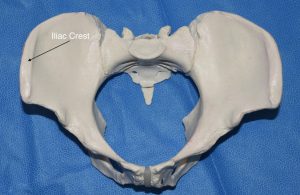
Pelvic Plasty is the newest form of hip augmentation that focuses on the bony or upper hip region. It is called a pelvic procedure as it augments or widens the bony iliac crest region of the hip. In the normal female or gynecoid pelvis there are numerous of anatomic shape differences from that of men. In terms of aesthetics, it has a greater transverse diameter and is rounder-shaped, having an increased iliac crest convexity, all as a result of having a larger internal diameter to accommodate childbirth.
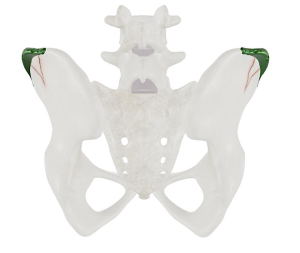
For some cis-females as well as transfemales, one hip augmentation goal might be to have a wider bony iliac crest. A specific metallic iliac crest implant- or plate- has now been FDA-approved for use in the U.S. with a multi-year history of clinical implantation in South Korea where it was initially developed. This has created another structural body contouring procedure based on direct reductive or augmentative bony changes along with shoulder and waistline narrowing (clavicle reduction osteotomies and rib removal surgeries)
Iliac Crest Implant
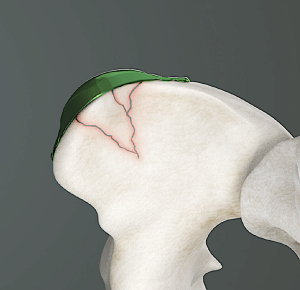
The Pelvic Plasty procedure uses a titanium implant that provides varying thicknesses from 15mm to 50mm at the greatest width of the iliac crest. On either end of the iliac crest portion of the implant-the working end-are an extended plate with holes for screw fixation on each side, making it what is referred to as a locking plate. The screw holes provide secure fixation to the bone so postoperative shifting does not occur and all forms of physical activity are safe after surgery.
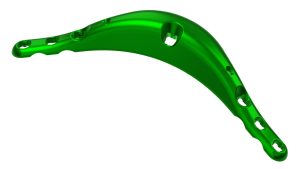
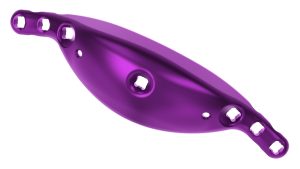
The most common implant sizes are 20 and 35mms but any size up to 50mms can be used. The implant size will depend on the patient’s body type, height and weight. We caution patients against choosing too large an implant as an awkward hip appearance can result.
While the implant is made of metal, titanium is remarkably light, and the iliac crest component is hollow on the inside. Though it’s hollow, it is not subject to deformation (bending) or a change in the material’s shape due to the strength provided by its titanium composition. It’s also permanent and can never degrade, break down or does it need to be replaced over the patient’s lifetime.
Surgical Implantation
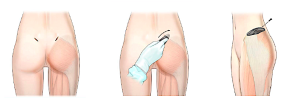
Placement of iliac crest implants takes 90 minutes to 2 hours to perform under general anesthesia. A 3cm incision is made over the posterior portion of the iliac crest in the prone position. There are no muscles attached directly to the iliac crest-only fascia- so no muscle dysfunction occurs after the surgery. The incisions are closed with dissolvable sutures and taped, so there is no need for suture removal after surgery. A circumferential hip wrap is applied right after surgery to provide soft tissue compression and control swelling.
Most patients stay overnight in the surgery center. There are no restrictions for walking or sitting, although some postoperative discomfort be present initially and it may take a few days to be comfortable walking normally.
Recovery
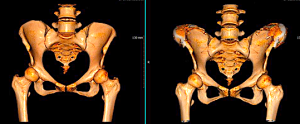
Walking is encouraged after surgery and patients should be able to return home within 2 to 3 days after the procedure. Combining this with other procedures, particularly body contouring procedures, will extend the recovery time.
Adjunctive Procedures
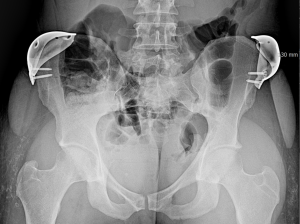
Iliac crest implants augment the superior bony portion of the hips but are not a complete hip augmentation method. In certain body types, additional silicone implant augmentation may be needed below the bony crest to create a smooth transition and contour. These hip implants can be placed during the iliac crest implant surgery or as a secondary procedure. These are usually smaller silicone implants placed under the gluteus medias muscle, which originates at the gluteal surface of the posterior iliac crest. They are typically placed through the same incision as the iliac crest implants.

North Meridian Medical Building
Address:
12188-A North Meridian St.
Suite 310
Carmel, IN 46032
Contact Us:
Phone: (317) 706-4444
WhatsApp: (317) 941-8237
